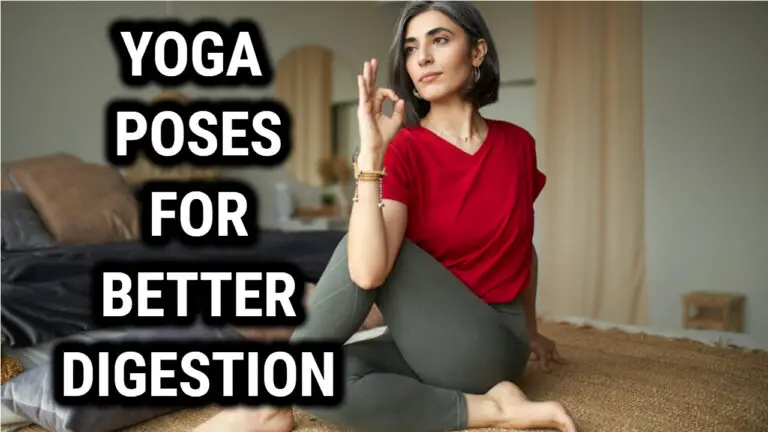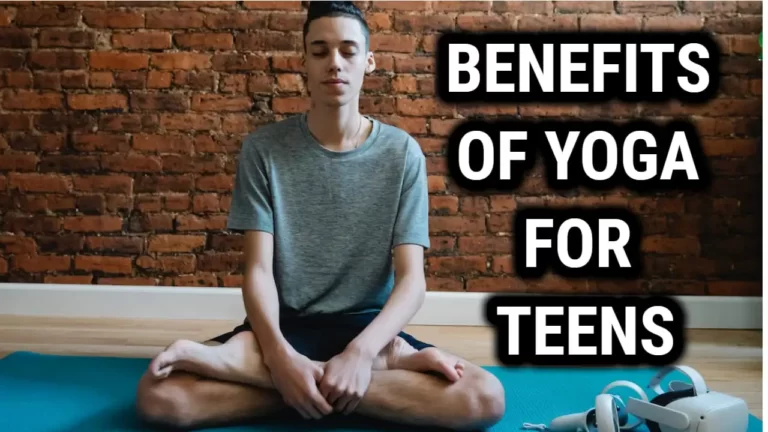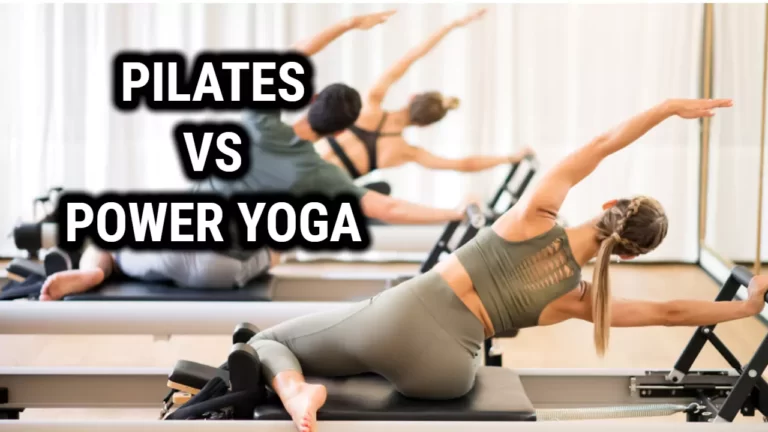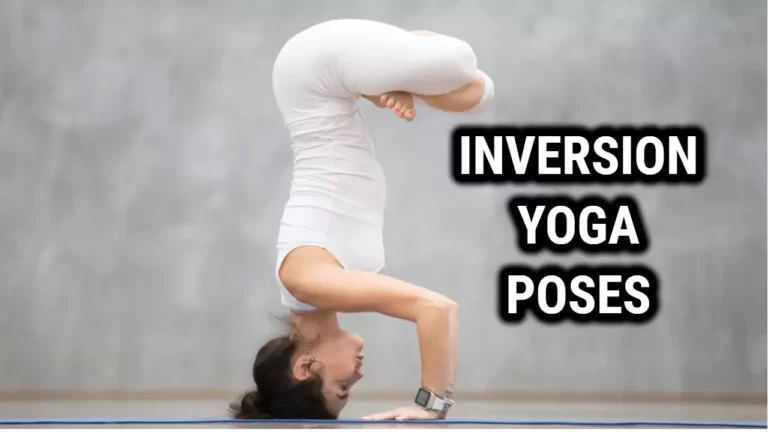Top Yoga Poses for Hypothyroidism: Improve Your Thyroid Health with These Simple Moves

Yoga is a great way to ease the symptoms of hypothyroidism. The poses can help reduce stress and create balance in the body, which can lead to improved thyroid function.
Here, we’ll look at some of the best yoga poses for hypothyroidism and how they can help you manage your condition. Yoga has been proven to be an effective form of exercise for those suffering from hypothyroidism. It helps strengthen the muscles and increase blood flow, which increases oxygen levels in the body.
Additionally, the poses used in yoga have been shown to reduce stress levels and provide relief to those managing hypothyroidism symptoms. So let’s explore some of these great poses that are beneficial for people with hypothyroidism.
Bridge Pose (Setu Bandha Sarvangasana)
The Bridge Pose, or Setu Bandha Sarvangasana, is an excellent yoga pose for those suffering from hypothyroidism. With its gentle yet effective backbend, it strengthens the spine and chest while stretching the neck and shoulders.
It also helps to improve circulation and digestion which can be beneficial for those with hypothyroidism. By gently compressing the thyroid gland, this yoga pose can also help balance hormones in this area and reduce symptoms of hypothyroidism.
In addition to its physical benefits, Bridge Pose can provide a feeling of uplifting energy that will help to relax the body and mind. This calming effect can be useful for reducing anxiety levels which are often associated with hypothyroidism.
Furthermore, taking deep breaths into the chest while in this pose can increase oxygen flow throughout the body, helping to support healthy thyroid function.
Shoulderstand (Sarvangasana)
Continuing the journey of yoga poses beneficial for hypothyroidism, shoulderstand (Sarvangasana) is a great pose to include. It helps stimulate the thyroid gland, increase blood flow and oxygen supply to the area, and helps improve digestion. As such, it has multiple benefits for people with hypothyroidism.
Here are four ways shoulderstand (Sarvangasana) can help those with hypothyroidism:
- Stimulates the thyroid gland: Shoulderstand activates the thyroid gland and helps maintain healthy hormone production.
- Increases Blood Flow and Oxygen Supply: The inverted position of the body in the shoulderstand increases blood flow to the neck area, which can help regulate metabolism.
- Improves Digestion: This pose helps improve digestion by stimulating abdominal organs, helping to break down food more easily.
- Relaxation: Shoulderstand also promotes relaxation as it stretches muscles in the neck and upper back, relieving tension and stress in these areas.
It’s important to practice this pose under proper guidance if you have hypothyroidism as some variations may not be suitable for your condition. With regular practice and consistency however, you will start seeing its positive effects on your health over time.
Bow Pose (Dhanurasana)
The Bow Pose, or Dhanurasana, is an excellent pose to help with hypothyroidism. It is a great way to boost the body’s energy levels, as it helps to improve circulation and stimulate the thyroid gland.
The pose is also said to help strengthen the back muscles and can be beneficial for improving posture. By creating a gentle stretch in the spine, this pose helps to bring balance and ease throughout the body.
While practicing this pose, it is important to keep your abdomen drawn in towards your spine and make sure that your tailbone remains grounded on the mat. As you do so, focus on opening up your chest and pushing out through your shoulder blades.
Feel free to hold this pose for as long as you are comfortable – breathing deeply into each inhale and exhale will help relax any tension in your body. With regular practice of Bow Pose, you can benefit from improved wellbeing and more vibrant health!
Cobra Pose (Bhujangasana)
Continuing the exploration of yoga poses that are beneficial for hypothyroidism, the Cobra Pose (Bhujangasana) is an excellent choice.
This pose strengthens the spine and helps to stimulate the thyroid gland by increasing circulation in the abdominal region.
It also stretches your chest, shoulders, and abdomen which can help to alleviate stress and fatigue.
To begin, lie on your stomach with your legs stretched out behind you.
Place your hands flat on the ground beside your chest and keep your elbows bent.
As you inhale deeply, press into your hands and lift your head and chest off the ground while arching back slightly.
Keep pressing down into your hands as you hold this pose for a few breaths before easing back down onto the floor as you exhale.
Practicing this pose regularly can help to improve symptoms of hypothyroidism such as fatigue, depression, weight gain or loss, and difficulty concentrating.
Fish Pose (Matsyasana
Fish Pose, or Matsyasana, is like a breath of fresh air for your body. It is one of the best yoga poses for hypothyroidism, as it helps to stimulate the thyroid gland and improve circulation in the area.
In order to practice Fish Pose:
- Start by sitting on your mat with your legs crossed.
- Place your hands on either side of you and lean back onto your elbows.
- Bend your knees and bring them up to rest against your chest.
- Bring the top of your head down to the ground and relax into the pose.
The benefits of Fish Pose are numerous, with improved circulation being among the most important ones. It also helps reduce stress levels and improves digestion, making it an ideal pose for those suffering from hypothyroidism.
By practicing this pose regularly, you can help support a healthy endocrine system and enjoy better overall health.
Breathing Techniques for Hypothyroidism
Yoga offers several breathing techniques that can help to stimulate the thyroid gland, which is responsible for producing hormones that regulate metabolism. Here are a few breathing techniques that can be beneficial for those with hypothyroidism:
- Ujjayi Pranayama: Also known as Ocean Breath, this technique involves inhaling and exhaling through the nose while constricting the back of the throat. This creates a gentle, soothing sound that can help to calm the mind and reduce stress. Ujjayi Pranayama also stimulates the thyroid gland and can help to regulate metabolism.
- Kapalbhati Pranayama: This technique involves rapid, forceful exhalations through the nose, followed by passive inhalations. Kapalbhati Pranayama can help to stimulate the thyroid gland and increase circulation to the head and neck.
- Bhastrika Pranayama: Also known as Bellows Breath, this technique involves rapid, forceful inhalations and exhalations through the nose. Bhastrika Pranayama can help to stimulate the thyroid gland and increase circulation to the head and neck.
It is important to practice these breathing techniques under the guidance if you are a beginner. These techniques should be practiced slowly and gently, with a focus on the breath and the sensations in the body.
Frequently Asked Questions
What Are The Potential Side Effects Of Practicing Yoga For Hypothyroidism?
Those with hypothyroidism should practice yoga poses that are gentle and slow-paced to prevent overstraining. Also, it’s important to be mindful of your body’s limitations and take breaks as needed.
Generally, forward folds, restorative backbends, twists, and gentle inversions are recommended poses for those with hypothyroidism. Additionally, it is important to consult a doctor before starting any new physical activity.
How Often Should I Practice Yoga For Hypothyroidism?
The frequency of practicing yoga for hypothyroidism can vary depending on the individual. Generally, it is recommended to practice yoga poses at least 3 times a week.
That being said, it’s important to listen to your body and not over-exert yourself; if you don’t feel like doing yoga one day, take a break and come back to it when you’re ready.
Anecdotally speaking, I know someone who has successfully managed their hypothyroidism with yoga by doing 10-15 minutes each day – so there’s no one-size-fits-all approach!
Is It Safe To Practice Yoga For Hypothyroidism If I Have A Pre-Existing Medical Condition?
Yes, it is generally safe to practice yoga for hypothyroidism if you have a pre-existing medical condition. However, it’s important to talk to your doctor before beginning any new exercise program.
Yoga can be a great way to reduce stress and help manage the symptoms of hypothyroidism, but certain poses may not be recommended depending on your individual health needs.
Be sure to discuss your plans with your doctor first so that you can make sure the poses you choose are safe and beneficial for your specific situation.
Are There Any Modifications I Should Make To These Poses If I Have Hypothyroidism?
When it comes to yoga and hypothyroidism, one size definitely does not fit all. If you have a pre-existing condition, you’ll need to make modifications to ensure you get the most out of your practice without putting yourself in danger.
From breathing exercises to easy stretches, there are plenty of poses that can be modified for those with hypothyroidism. Remember, when it comes to your health, slow and steady wins the race!
What Other Types Of Exercises Can I Do To Help Manage My Hypothyroidism?
Exercising can be an effective way to help manage hypothyroidism.
In addition to yoga, other forms of physical activity like walking, biking, and swimming can be beneficial.
Strength training with light weights or resistance bands is another great option for people with hypothyroidism, as it can help boost metabolism and promote weight loss.
Pilates and tai chi are low-impact exercises that can improve balance and flexibility while promoting relaxation.
It’s important to listen to your body and take breaks when needed.
Conclusion
Yoga can be a great way to help manage hypothyroidism, provided you take the necessary precautions. If you’re looking for an easy-to-follow, safe way to reduce your symptoms, then yoga is certainly worth considering.
Don’t let hypothyroidism keep you from enjoying the physical and mental benefits that come with practicing yoga. So don’t be shy – give it a try! I guarantee that if you do, you’ll soon find yourself feeling healthier and more energized than ever before.





